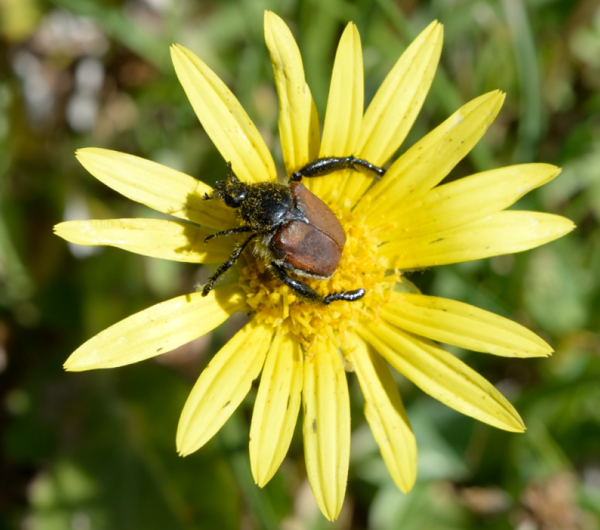I really enjoy my CAR
(co-ordinated avifaunal roadcount) route. WU08 follows a dirt road to
the north of the Baviaanskloof mountains, starting in renosterveld,
winding through guarriveld thicket, and ending on dry nama-karoo
plains. I've been doing this route for several years now and I could
not wait to take my daughter Elena (4) and son Charlie (2) on this
route one day. This survey was to be it.
Traditionally, I do
this route with my dad, but he wasn't feeling well. Then the three
volunteers I'd invited along couldn't make it either. Was this
because of the kids or for other reasons?! Suddenly I was faced with
having to do the count by myself AND look after the kids. I have to
say on setting off on the Saturday morning, I was a bit anxious.
I'd spent the previous
afternoon prepping the kids: letting them know we'd be out most of
the day, but also showing them pictures of what we would be looking
for via Google Image searches. They'd packed a bag of snacks as well
as a few books and fluffy toys to keep them company.
When my alarm went off
at 5.30am Elena was already awake and ready to go. Charlie took a bit
more convincing that this was a reasonable time to be waking up.
Its nearly a one hour
drive to the start of our route, during which time Eli was already
making sure that I was recording the animals we were seeing. This
included a family of giraffe next to the road on a nearby game farm.
Just after 7am we were
at the start of the route, greeted by the cackles of a Southern Black
Korhaan and eyed wearily by a Black-shouldered kite. But spirits were
good. Eli's task would be to count off the stops every 2kilometers on
her data sheet while I recorded the target animals on mine. We got
off to a good start with a plethora of raptors showing themselves.
 |
| Elena fills out her datasheet |
Of course, there were
plenty of distractions to keep us happy, from cows to tortoises.
Tortoises of course were the biggest hit.
One of the questions on
the datasheet is: how many people in the car? I decided to fill this
in at the end on the criteria that if either of them spotted a target
species they would be included as an observer. I was also faced the
task in the first few kilometers of figuring out if shouts of 'Jackal
Buzzard!' from Elena were legitimate or not! Unfortunately, number
of observers noted down on the end was 1. I also toyed with the
possibility of extracting 0.5 due to distractions to that observer,
but was pretty sure the ADU system wouldn't allow decimals (or
negative numbers).
Actually, the first
20km or so were pretty good. Mostly this was because every 2km one of
the Chomp chocolates or similar would be rationed out. Eli would also
climb onto the car to look around for animals. If we'd been counting
butterflies we'd have had a record sheet.
 |
| Charlie: "there's a bird on the car daddy!" |
 |
| After several chocolates someone decided she needed to jog down the road... |
Eli also recorded some scenes with my smartphone camera.
20km and 3 hours in
though the heat was getting a bit crazy – easily 30 degrees and
only 10am! Within 10km I had the survey route to myself, with the
kids asleep on the back seat. While the count was not very
spectacular in terms of sightings, I'll put this down to the heat
wave rather than the kids. Steenbok are a staple species on this
route, but it was clear from early on that most were shade seeking to
get respite from the searing heat.
 |
| Ewe with a View |
 |
| Another dead tortoise due to low line electric fencing |
 |
| Cape Crows are a staple species observed on this route |
 |
| Steenbok ewe, flushed from the road verge. |
Finally, route over we
had a nice lunch in Willowmore and rode out the heat of the day next
to a dam while I finished off some atlasing.
Les Underhill may be
chuffed to know that one of Charlie's first words was 'CAR!' and he's
happy to sit in one while doing one all day.



































